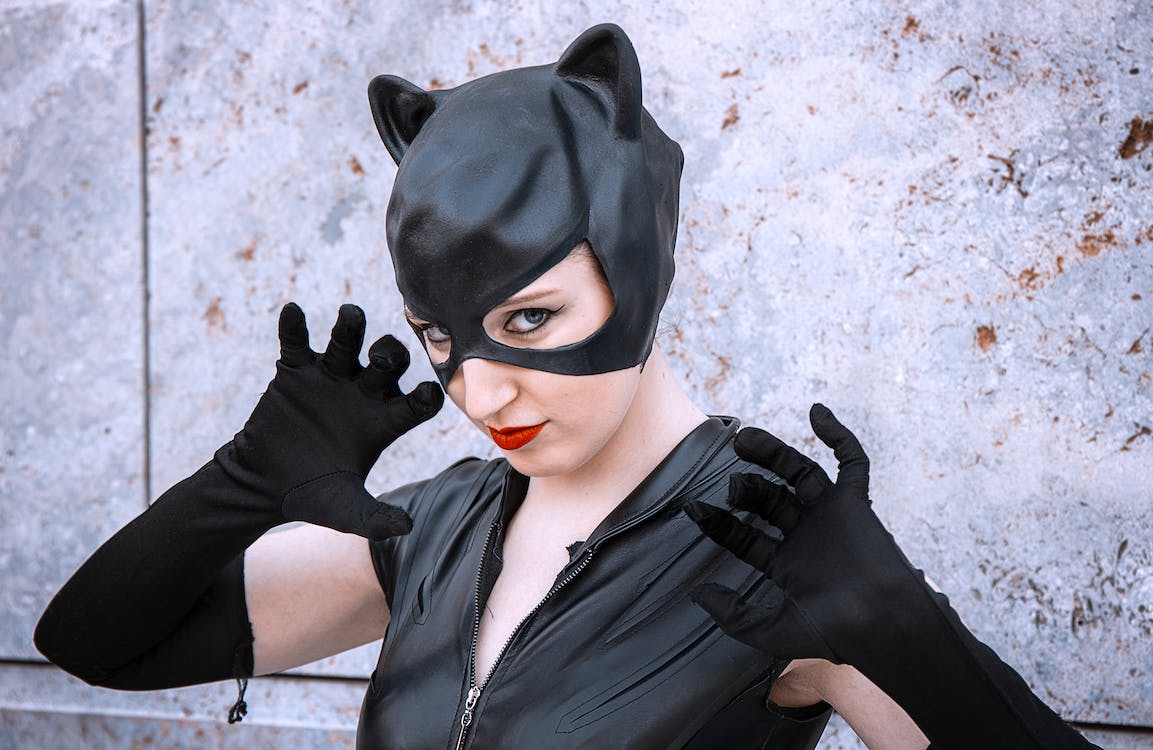Cosplay, short for “costume play,” is a hobby in which individuals create and wear costumes and accessories to represent a specific character or idea. It has its roots in science fiction and fantasy conventions but has since grown to include a wide range of characters and genres.
The psychology of cosplay is multifaceted and can vary from person to person. For some, cosplay is a way to express their creativity and imagination, and to take on a different identity for a short time. For others, it is a way to connect with like-minded people and form a sense of community.
Cosplay can also serve as a form of self-expression and can be a way for people to feel more confident and comfortable in their own skin.
| When Was The Term Cosplay Coined | 1984 |
| Who Coined The Term | Nobuyuki Takahashi |
What exactly is cosplay?
Cosplay, a portmanteau of “costume play,” is a performance art and activity in which participants, known as cosplayers, dress up in costumes and fashion accessories to impersonate a certain character.
Cosplayers frequently interact to form a subculture, and a larger definition of “cosplay” refers to any costumed role-playing outside of the stage. Subjects can be any entity that lends itself to dramatic interpretation. Anime, cartoons, comic novels, manga, television programs, and video games are all popular sources.
Cosplay evolved from fan costuming at science fiction conventions, beginning with Morojo’s “futuristicostumes” for the 1st International Science Fiction Conference in New York City in 1939. In 1984, the Japanese term “cosplay” was coined.
Since the 1990s, a rapid increase in the number of people cosplaying as a pastime has made the phenomenon an important component of popular culture in Japan and other regions of East Asia and the Western world.
What is the distinction between dress-up and cosplay?
Cosplayers do more than just dress up as a character; they work hard to become that persona.
For those who are unfamiliar, cosplay is the act of dressing up as a character from a video game or comic book. Yet there’s a significant distinction between this and regular dress-up: you truly play that persona.
Pose, catchphrases, and even interactions with other cosplayers can help. The ultimate outcome is “an immersive adventure, like the character is truly present.”
For some, it also fosters a strong sense of community. We asked cosplayers at the EGX expo in London what it meant to them.
What is the psychology of cosplay?

For many people, cosplay allows them to temporarily step outside of their everyday lives and into the role of their favorite character. This can be a fun and enjoyable way to express creativity and connect with others who share similar interests.
There are a number of psychological factors that may contribute to the appeal of cosplay, including:
- Identity exploration: Cosplay can allow people to explore different aspects of their identity and try on different roles and personalities. This can be especially appealing to people who may feel constrained by their everyday lives or who are seeking new ways to express themselves.
- Social connection: Cosplay can also be a way for people to connect with others who share similar interests. Many people who cosplay participate in online communities or attend conventions, where they can meet and interact with other cosplayers and fans.
- Creativity and self-expression: Cosplay can be a creative outlet for people, as it involves designing and creating costumes and props. This can be a rewarding and enjoyable way for people to express their creativity and share their passion for a particular character or franchise.
- Self-esteem: For some people, cosplay can be a way to boost their self-esteem and confidence. By creating and wearing a costume, people may feel more empowered and self-assured.
Overall, the psychology of cosplay is complex and multifaceted, and different people may be drawn to the hobby for different reasons. However, it is clear that cosplay can be a fun and rewarding way for people to express themselves and connect with others.
What are the beliefs of cosplay?
It is difficult to say what the “beliefs” of cosplay are, as cosplay is a hobby that is enjoyed by people from many different backgrounds and with a wide variety of beliefs. However, there are a few general principles that many cosplayers may adhere to.
Many cosplayers respect the intellectual property rights of others and do not use someone else’s copyrighted material without permission. This includes costume designs, images, and other proprietary content.
Many cosplayers strive to create a welcoming and inclusive community where people of all backgrounds and experiences are welcomed and celebrated.
Cosplay is often seen as a way for people to express their creativity and share their passion for a particular character or franchise.
For many cosplayers, the most important belief is simply to have fun and enjoy the hobby. Cosplay is often seen as a way to escape the stresses of everyday life and embrace one’s inner fan.
Overall, the beliefs of cosplay will vary from person to person, and there is no one set of beliefs that all cosplayers adhere to. However, the common thread among most cosplayers is a love of the hobby and a desire to express themselves and connect with others who share similar interests.
What was the first ever cosplay?

The term “cosplay” itself was coined in 1984 by a Japanese journalist named Nobuyuki Takahashi. Takahashi used the term to describe the practice of dressing up as characters from Anime and Manga, which was popular among fans at the time.
Before the term “cosplay” was coined, people who dressed up as characters from their favorite movies, TV shows, and other forms of media were often referred to as “science fiction fans” or “fantasy fans.” These types of fans have been around for decades, and there are many examples of people dressing up as their favorite characters from as far back as the 1930s.
Some of the earliest examples of cosplay-like behavior include:
- The first World Science Fiction Convention was held in New York City in 1939: Many of the attendees of this convention dressed up as their favorite science fiction characters, making it one of the first instances of people dressing up as characters from popular media.
- The first “Star Trek” convention, was held in New York City in 1972: Many of the attendees of this convention dressed up as their favorite “Star Trek” characters, marking the first time that people dressed up as characters from a specific TV show.
- The first “Comic-Con” convention, was held in San Diego in 1970: This convention was originally intended as a gathering for comic book fans, but it quickly evolved into a more general pop culture event. Many of the attendees dressed up as their favorite characters from comics, movies, and TV shows.
Overall, while the term “cosplay” may have been coined in the 1980s, the practice of dressing up as characters from popular media has a long history.
What should you not say to a cosplayer?
There are a few things that you should avoid saying to a cosplayer, as they may be seen as rude or disrespectful.
Many cosplayers put a lot of effort into creating accurate and detailed costumes, and it can be disheartening to have their hard work dismissed as inaccurate. Instead of criticizing a cosplayer’s costume, try to focus on the positive aspects of their work.
Cosplay is for everyone, and people of all ages, genders, and races should feel welcome and included in the community. Avoid making assumptions about who can or cannot cosplay a particular character based on their age, gender, or race.
“Can I touch your costume?” or “Can I take a picture with you?” Cosplayers often put a lot of time and effort into creating their costumes, and they may not want them to be handled or touched without their permission. Similarly, cosplayers have the right to control their own image and may not want to be photographed without their consent. It is always important to ask permission before touching someone’s costume or taking a picture with them.
Cosplay is about expressing one’s love for a character, not about trying to meet certain physical standards. Avoid making comments about a cosplayer’s appearance or suggesting that they are not “good enough” to cosplay a particular character.
Overall, it is important to remember that cosplayers are people who are passionate about their hobby and deserve to be treated with respect and kindness. Try to be mindful of your words and actions when interacting with cosplayers, and remember that cosplay is about having fun and expressing one’s love for a character, not about meeting certain physical or aesthetic standards.
Conclusion
- Cosplay, short for “costume play,” is a hobby in which individuals create and wear costumes and accessories to represent a specific character or idea.
- For many people, cosplay allows them to temporarily step outside of their everyday lives and into the role of their favorite character.
- It is difficult to say what the “beliefs” of cosplay are, as cosplay is a hobby that is enjoyed by people from many different backgrounds and with a wide variety of beliefs.
- It is important to remember that cosplayers are people who are passionate about their hobby and deserve to be treated with respect and kindness. Try to be mindful of your words and actions when interacting with cosplayers
Other Articles
- Stream Or Skip: Is Vinland Saga Worth The Watch?
- Is Yuri on Ice Worth Watching? (Know More)
- Is The Promised Neverland Good? (Find Out)
Click here to view the visual Story version of this article.